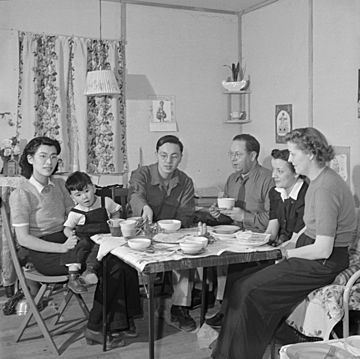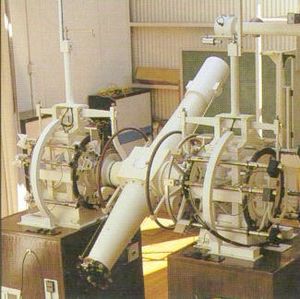Julena Steinheider Duncombe facts for kids
Julena Steinheider Duncombe (1911–2003) was an American mathematician and astronomer. She was famous for her work as a teacher and as an astronomer.
She taught at the Heart Mountain Relocation Center. This was a camp where Japanese-Americans were held during World War II. Later, she worked at the United States Naval Observatory. There, she used a special telescope called a 6-inch transit circle. She was the first woman to use it! She also helped organize information about stars using punched cards. She even helped predict eclipses for special calendars called almanacs.
Life Story
Julena Steinheider was born on September 21, 1911. She grew up on a farm in Dorchester, Nebraska. She was the only girl in a family of five children.
In 1932, she finished college at Doane College. She earned a degree in mathematics and also studied astronomy. After college, she became a teacher. First, she taught in a small, one-room school. Later, she taught geometry at the Heart Mountain Relocation Center in Wyoming. This camp was one of the places where Japanese-Americans were sent during World War II.
In 1944, Julena started working for the United States Naval Observatory. This observatory is in Washington, DC. There, she met Raynor L. Duncombe, who was also an astronomer. They got married in 1948. She then took his last name, Duncombe.
After their wedding, they moved to Yale University for a short time. But they returned to the Naval Observatory in 1950. Julena Duncombe retired from her work in 1973. In 1975, she and her husband moved to Austin, Texas. They also had a second home in Highlands, North Carolina.
Julena Duncombe passed away on September 13, 2003.
Achievements
Julena Duncombe was recognized for her important work in science. She was chosen as a "fellow" of the American Association for the Advancement of Science. This means she was honored for her big contributions to science.
See also
 In Spanish: Julena Steinheider Duncombe para niños
In Spanish: Julena Steinheider Duncombe para niños



